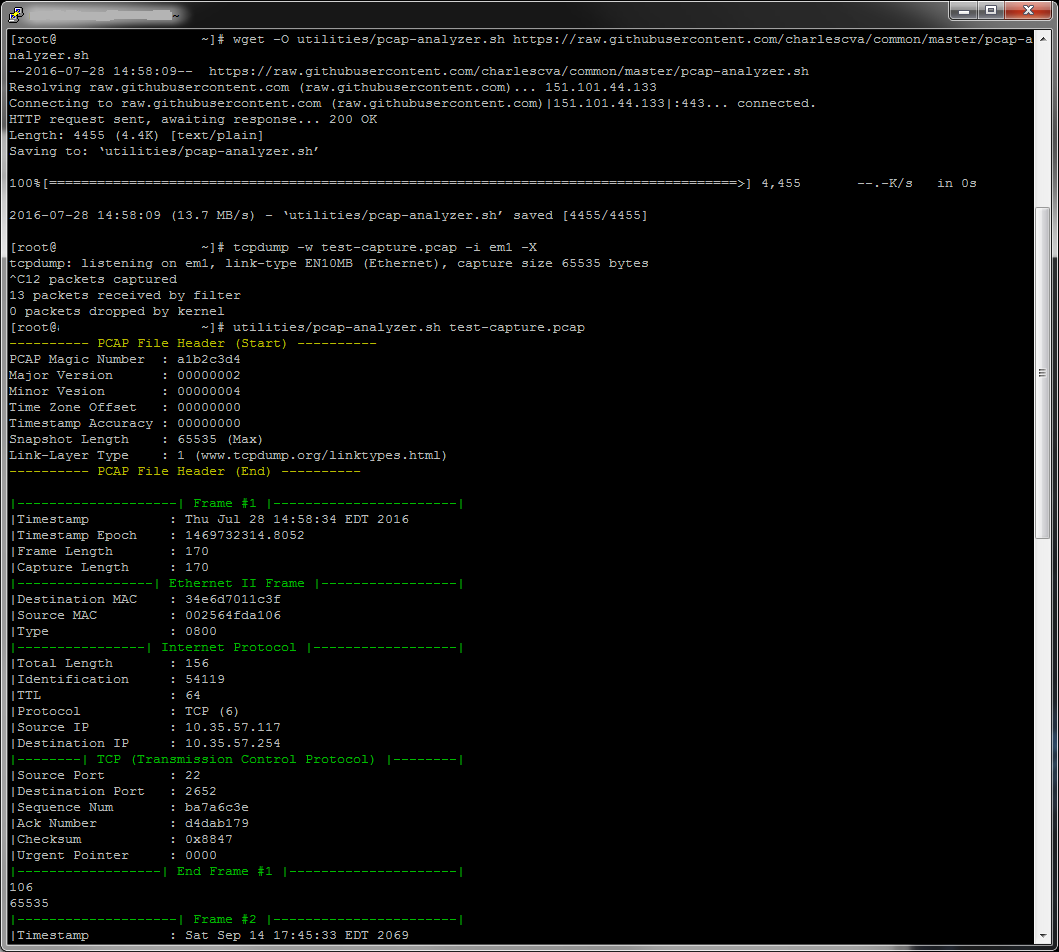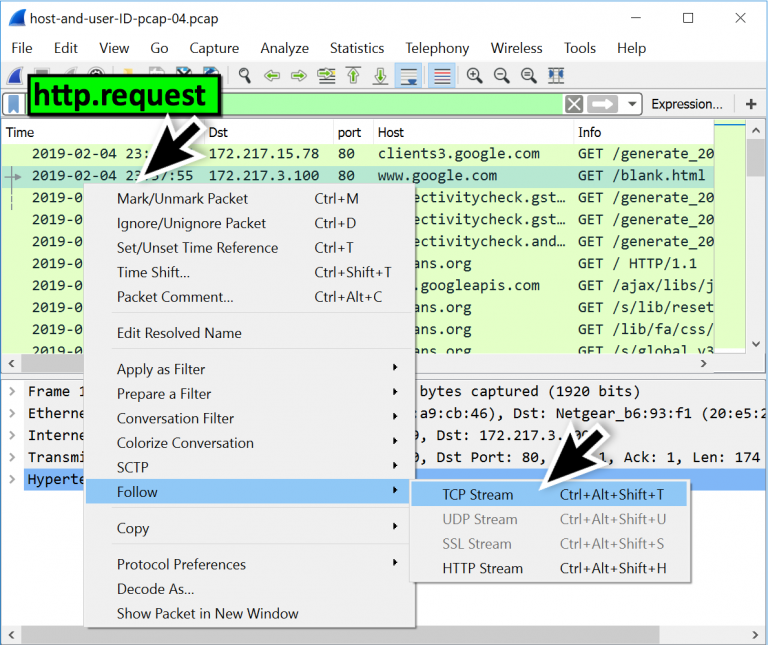


Output would be something like below, tcpdump: verbose output suppressed, use -v or -vv for full protocol decode Let’s assume, i want to capture packets from interface “enp0s3” ~]# tcpdump -i enp0s3 When we run the tcpdump command without any options, it will capture packets on the all interfaces, so to capture the packets from a specific interface use the option ‘ -i‘ followed by the interface name. In this tutorial we will discuss how to capture and analyze packets using different practical examples, Example:1) Capturing packets from a specific interface So to stop or cancel the tcpdump command, type “ ctrl+c”. When we run the tcpdump command without any options then it will capture packets of all the interfaces. On RPM based Linux OS, tcpdump can be installed using below yum command # yum install tcpdump -y


 0 kommentar(er)
0 kommentar(er)
